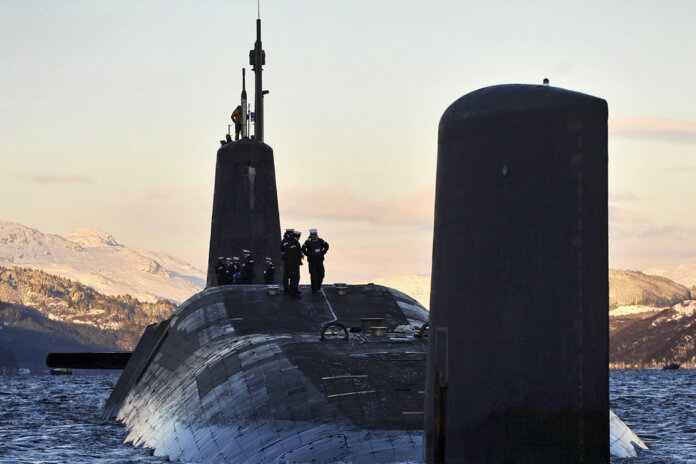
The UK Royal Navy (RN) submarine HMS Vanguard has conducted a Trident missile firing that has demonstrated the boat’s readiness to return to operations following an extensive refit.
Vanguard – the RN’s first-in-class nuclear-powered ballistic missile submarine (SSBN) – conducted a Demonstration and Shakedown Operation (DASO) off the Florida coast in late January. The DASO followed the boat’s completion of a long overhaul period (refuel), or LOP(R), deep maintenance process, which took place between December 2015 and July 2022. The submarine left Babcock’s Devonport, Plymouth refit facility in May 2023, and later sailed to the US Navy’s (USN’s) Atlantic Undersea Test and Evaluation Center (AUTEC) facility for the DASO. The missile test itself took place on 30 January.
A DASO is designed to test and demonstrate the readiness of the submarine and its crew to fire a Trident submarine-launched ballistic missile (SLBM). While, in this instance, the Trident D-5 SLBM experienced an event-specific technical malfunction after exiting its launch tube and broaching the surface, the DASO still demonstrated that the crew and submarine had successfully completed the launch process.
In a written statement to Parliament on 21 February, UK Secretary of State for Defence Grant Shapps said “[A DASO] involves a comprehensive series of complex weapons system and sub-system tests, [and] assesses the performance of the submarine and its crew …. The submarine and crew were successfully certified and will rejoin the operational cycle as planned.”
Vanguard is one of four Vanguard-class SSBNs in the RN’s fleet. The role of the four boats is to deliver the UK’s independent strategic nuclear deterrent capability by generating a continuous at-sea deterrence (CASD) posture. This posture is based around an operational cycle that consists of one boat being on patrol, another boat working up for patrol, another having returned from patrol and perhaps being in routine maintenance, and the last boat being in deeper, longer-term maintenance like a LOP(R).
by Dr. Lee Willett













